
A Festival Of Ephemerals
May 13th, 2016
Three days later, now at the east end of South March Conservation Forest, and things were coming back to life. Black-Throated Green Warblers were chanting "zoo-zee, zoo-zoo-zee" from the treetops, Least Flycatchers were chebeking, and this Rose-Breasted Grosbeak was singing his melodious song, famously described by Roger Tory Peterson as "like a robin that has taken voice lessons":
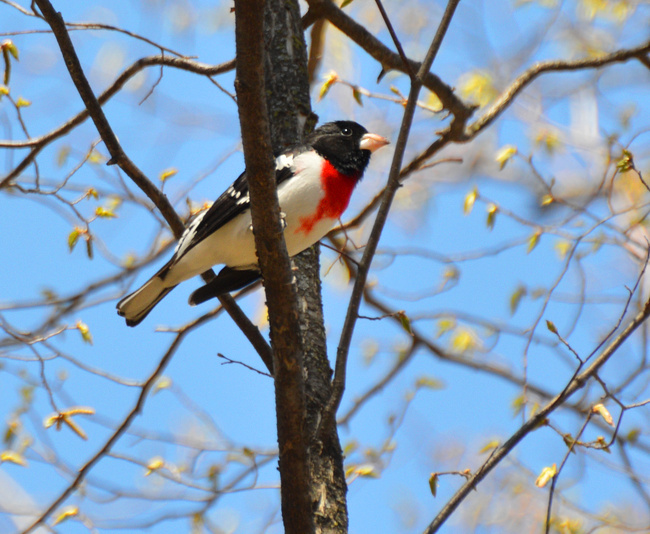
Rose-Breasted Grosbeaks are one of the characteristic breeders of South March. In fact, I don't know of anywhere else in the Ottawa area that has as many of them in summer, not even in Gatineau Park.
But the stars of the day were the spring ephemerals--those short-lived wildflowers that blossom in the woods in early spring, before the trees steal their sunlight. There is something primeval about ephemerals. They are true natives of eastern North America (unlike many of the familiar flowers that spring up on our roadsides and in our lawns), adapted to this land as it once was: covered by forest. I get excited to see them in spring, almost as much as I thrill to the return of warblers, tanagers and grosbeaks.
South March Forest was a festival of spring ephemerals that day. Trout lilies, spring beauties, bloodroot, hepatica, red trilliums, white trilliums just starting to unfurl. And this one, a wildflower I'd never seen before:
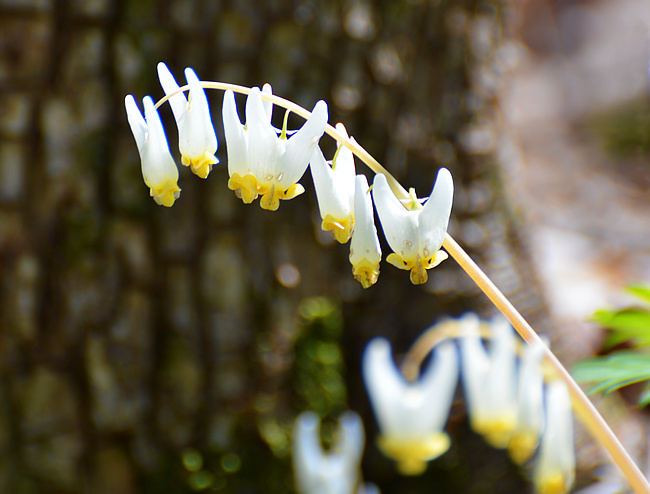
1680x1050 wallpaper
My Peterson's flower guide told me it was Dutchman's Breeches. There was just one sunny slope where I found them, growing in abundance amidst hepatica, spring beauty, and a lone red trillium. Nectaring insects were all over that slope, and the dutchman's breeches was especially popular with bumblebees, including handsome Tricolored Bumblebees. I later learned from Wikipedia that this flower is specially adapted for feeding by bumblebees, and dependent on them for pollinaton.

1680x1050 wallpaper
( More (red trillium, hepatica, trout lily) )
South March at Sunrise
May 9th, 2016
Early Tuesday morning I headed out to the west end of the South March Conservation Forest, my favorite bit of wilderness this side of the Gatineau. The wind had changed for the better (a south wind, giving spring migrants a boost), so I was hoping for some new arrivals--thrushes, tanagers, rose-breasted grosbeaks. But, even though the flood of May migration had begun in far-southern Ontario (judging by all the Ontbirds reports in my mailbox), it hadn't quite gotten here yet. My only two spring firsts were by ear: the chanted crescendo of a distant Ovenbird (a warbler I have yet to successfully photograph after eight years of trying), and the winnowing of a snipe over Huntmar Road.
It was nonetheless a beautiful morning.
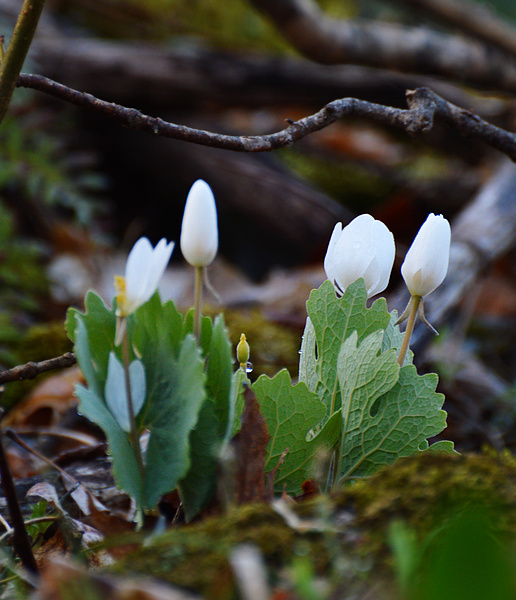
Bloodroots, still half-asleep in the early morning light. These are ephemeral wildflowers, among the first to bloom in spring, and quick to disappear. Their lurid name refers to the poisonous orange-red sap that bleeds out of the roots when cut. Native Americans once used it as a dye.
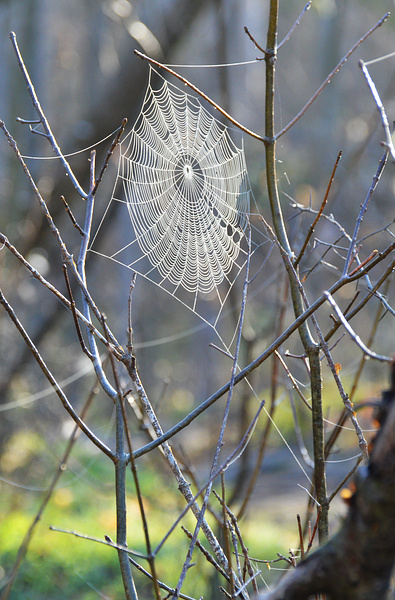
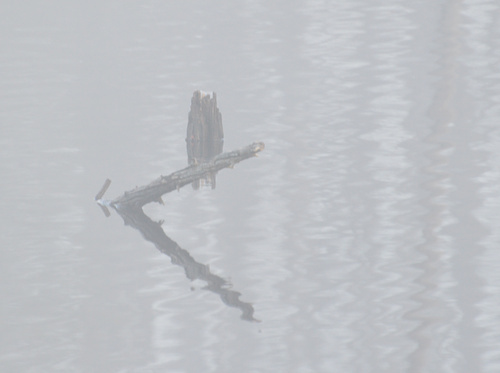
An owl perched over the beaver pond! Or...then again, maybe not. I admit it had me fooled for a moment, though.
I was back in my car when I had my final photo op of the day, as a group of three raccoons attempted a death-defying sprint across Huntmar at rush hour. I managed to roll down the window and get the camera ready just in time to capture them climbing up onto the road.
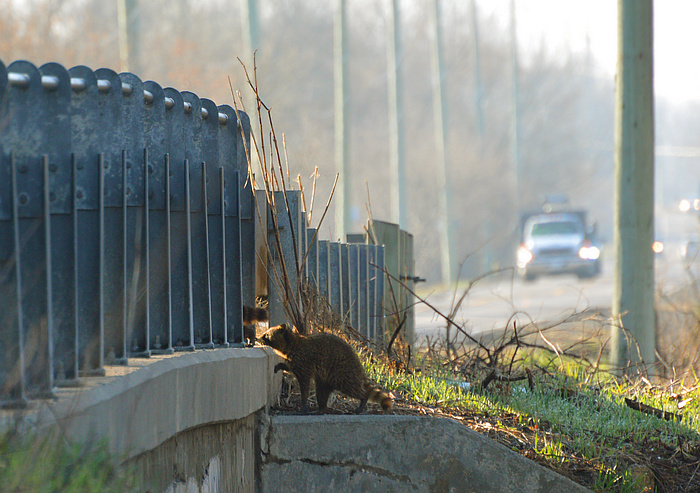
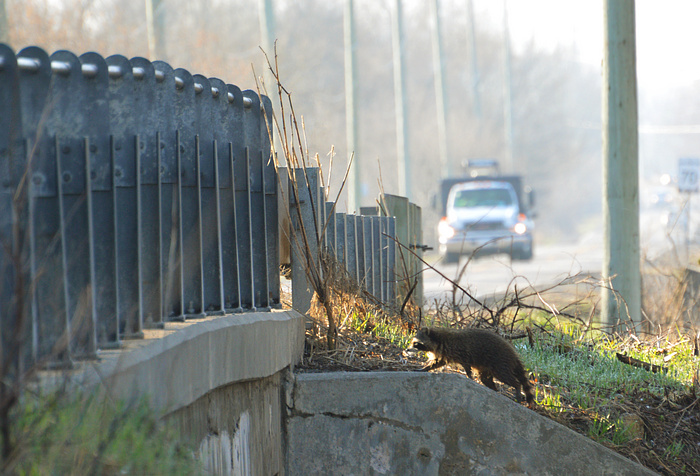
They all made it across!
Those who wish to be noticed, and those who do not
May 1st, 2016
Some photos from a weekend outing to Mud Lake (except for the Wild Turkey, which I saw along Fifth Line Road in rural Dunrobin.)

Drake Wood Duck.
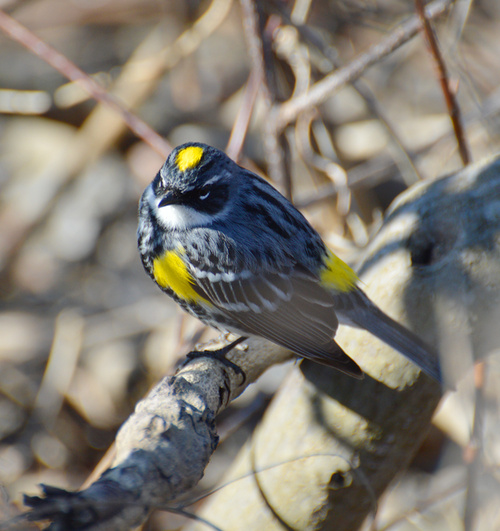
Welcome back, beautiful Yellow-Rumped Warblers!
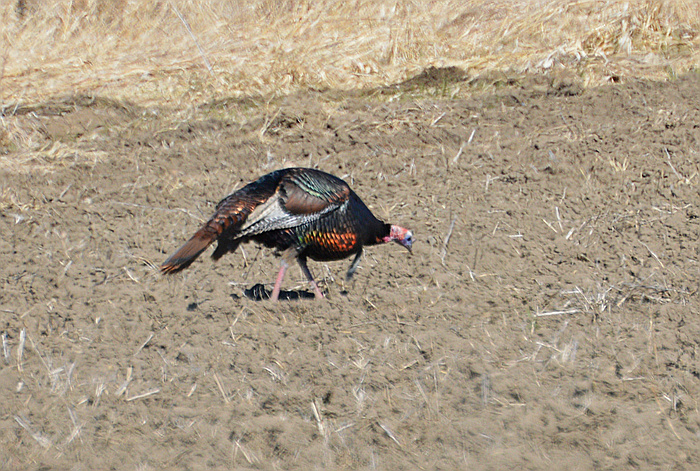
A tom Wild Turkey, decked out in his best iridescent colors for the breeding season. He had been fanning his tail for the ladies, but got shy when he noticed me watching him.
On to the "do not wish to be noticed" section!

A soundly sleeping little Eastern Screech-Owl. From a distance, he just looks like part of the tree.
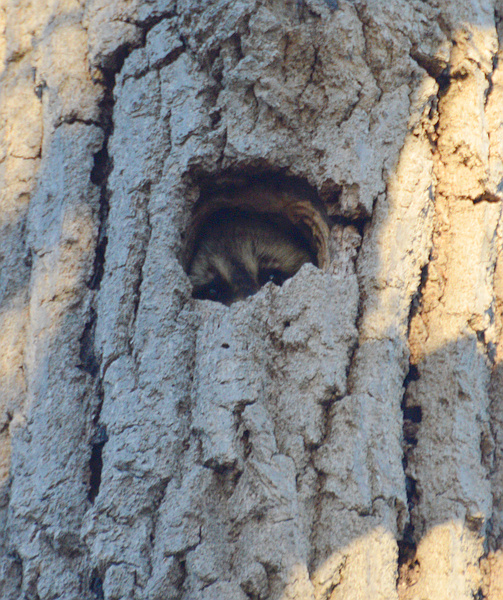
Who do you think?
A Blizzard Of Snow Geese
March 26th, 2016
Every spring and every fall, migrating Snow Geese amass in fields east of Ottawa: sometimes thousands, sometimes tens of thousands, sometimes over a hundred thousand. It's a brief window, especially in spring, and the rest of the year you'll be hard-pressed to see a single Snow Goose.
I've been wanting to capture the spectacle on camera for years. So last Wednesday I headed out to the Cobb's Creek floodplain, one of the two floodplains where waterfowl habitually mass each spring. (Directions: drive east down Russell Road approximately forever. When you see a whole lotta water and a whole lotta birds, stop.) For a space of about a week, the creek floods and the surrounding farmer's fields turn into a massive shallow lake. The resulting habitat is highly attractive to Snow Geese, and also to Northern Pintail ducks, another bird you'll be hard-pressed to see if you miss that narrow window.
The flood had already dramatically receded in the two days since I was last there. I camped out by the roadside and hoped that a raptor scare (an eagle or falcon, say) would flush the flock and maybe bring them closer to the road--or at least create more interesting photos.
I was not disappointed. Within about fifteen minutes of my arrival, the entire mass of geese rose from the water.
(Since these kinds of photos can't really be appreciated at low res, clicking on any of them will open a fullscreen version.)
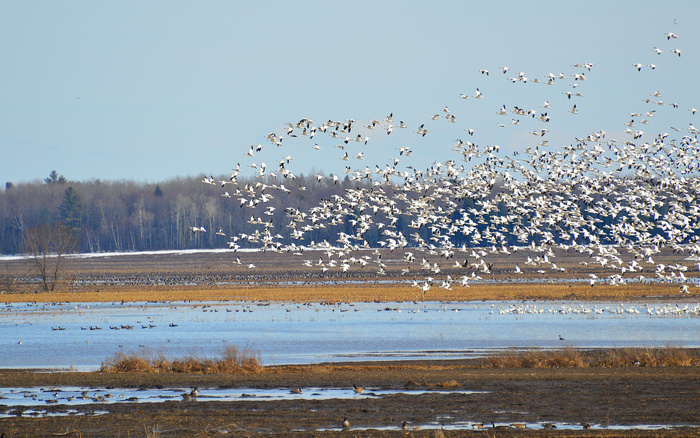

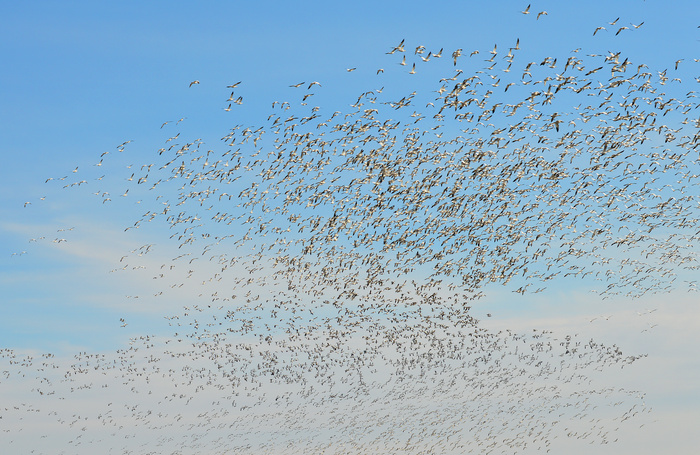
Their arc was so wide, it carried some of them nearly over my head.
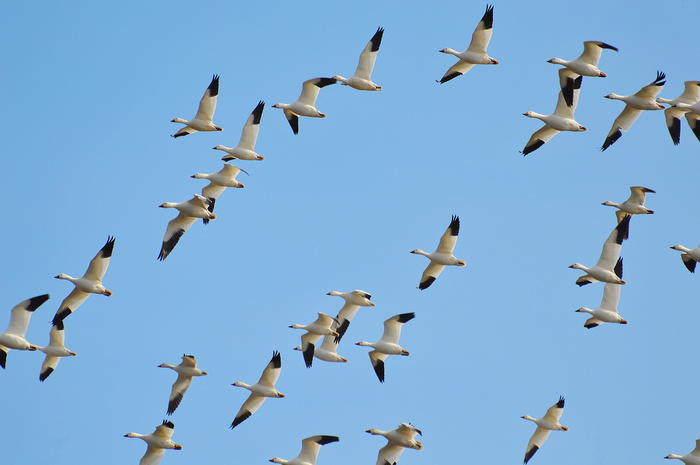
Settling back in:
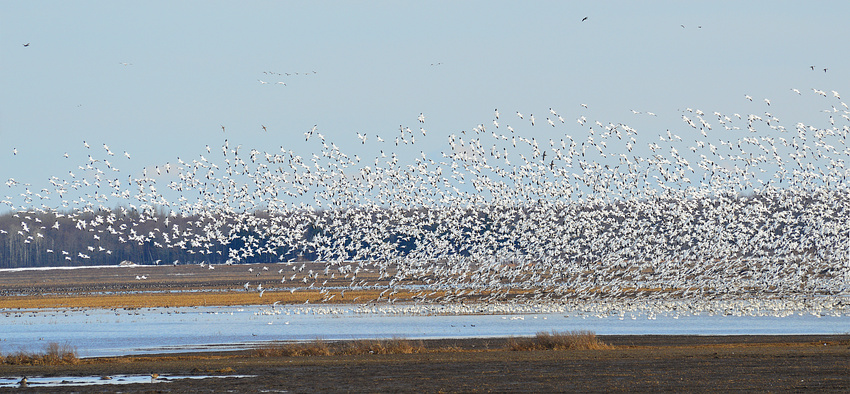
A last-minute rescue
January 6th, 2016
So how have things fared with our two western visitors? Answer: about how I expected, but with one bit of unexpected good news.
The Western Bluebird indeed disappeared after that big snowfall in late December, and has not been seen since. I like to think she finally headed south.
The Bullock's Oriole carried on in Pakenham, probably unable to build enough energy reserves to migrate. She continued to be able to eat crabapples (and orange slices offered by local residents) in her favorite tree even after the heavy snow. It was the sharp drop in temperature afterwards that really spelled the end for this neotropical migrant. Yesterday, after several days of trying to stay warm near a gas metre on someone's house, she was found emaciated and barely able to move.
The good news is people were then able to capture the oriole and take her to the Wild Bird Care Centre, where she is alive and eating well! She is expected to spend the rest of the winter in their care.
Pileated Woodpecker At Beaver Trail
December 27th, 2015
Blazing color on an overcast winter morning.

1680x1050 wallpaper
A Western Visitor
December 26th, 2015
It's been an amazing few months for birders in Ottawa, with rarity after rarity. Many of them should be well south of here by now--the Bullock's Oriole, still hanging out in its favorite apple tree in Pakenham, should be in the tropics! But so far, our exceptionally mild winter has been a blessing to them.
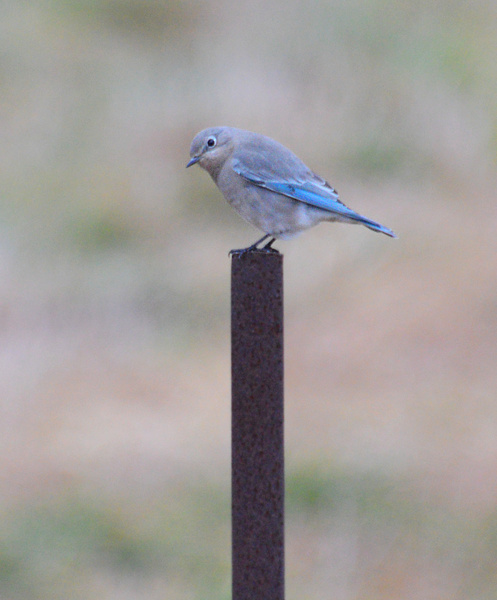
This female Mountain Bluebird has also been around for weeks. Like the Bullock's Oriole, she's a bird of the west, and apparently flew east (or got blown east) when she meant to fly south. She too has a favorite spot: the intersection of Century and Goodstown in Richmond, where she searches for insects in the still-snowless grassy field, and eats berries in the tree across the street. I took this shot from my car to avoid spooking her. (And I can't tell if that's my camera she's tilting her head at, or a potential food item!)
I worry for both of these birds once winter finally happens for real. The oriole is probably stuck, as she will not be able to either survive dead of winter or build up enough energy reserves to travel south. (Though people are doing their best to help her by putting up orange-slice feeders.) However, a Mountain Bluebird is more accustomed to temperate-zone winters than an oriole. They naturally winter as far north as Colorado. It's probably not in her best interests to stay here, so, I hope to hear that she swiftly disappears in the coming snow/cold snap, and I will assume that she has taken the hint and continued on her way.
A Needle In A Snowstack
November 11th, 2015
Today I was treated to what was probably my finest mega-rarity yet: a bird that is here in Ontario for the first time in recorded history! It's called a Pink-Footed Goose, breeds in Iceland and Greenland, and somehow ended up travelling with a migrant flock all the way to North America.
This bird is a 1 in 100,000 (literally) needle in a haystack, part of a flock of tens of thousands of migrating Snow Geese massed in the fields near Casselman. And that is a spectacle I had never seen before, either--thousands, yes, but not tens of thousands. It gave me a fresh appreciation for why they're called Snow Geese. On the ground, they cluster so densely they look like a layer of snow. In the air, they look like a blizzard.
I joined a group of about ten other birders on Lafleche Road near Highway 138, all scanning the flock with scopes. They actually had the bird in sight when I arrived, but before I could get it in my sights, the entire flock spooked, took to the air, swirled around and finally landed again, shuffling the deck. (Just to keep things interesting, they typically shuffle the deck like that every half hour or so.)
After an hour of fruitless searching I was about to give up. Then I saw Tony Beck arrive and figured, well, if anyone is going to find it, it's going to be him. So I texted my husband and told him I might be back late, blew some warm air onto my hands, and settled back in. And a half hour later I watched an unmistakable Pink-Footed Goose plowing his way through the snowy multitudes!
No pictures today, but I promise to take the camera back up soon. Speaking of snow-white creatures, I'm hoping to photograph an ermine this winter...
Sometimes nature comes to you
August 23rd, 2015
I haven't been getting out on nature walks much lately (waiting for a plantar fasciitis to heal up), but sometimes nature comes to you! I was out taming my overgrown meadow of a back lawn a few weeks ago, when I found this beauty.
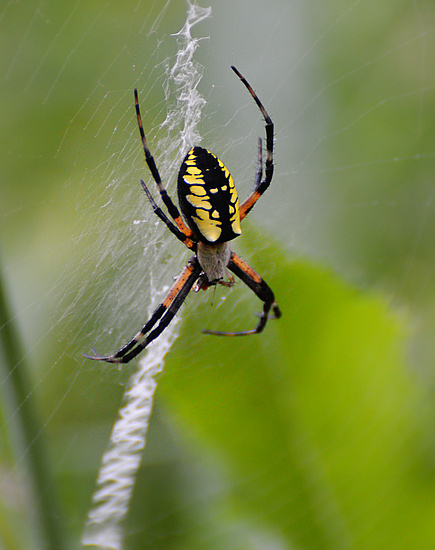
Argiope aurantia, known by many names including golden garden spider (the etymology of her Latin name is "gilded silver-face.") She was well over an inch long. I rushed inside to get the camera, and my first picture when I got back was of her busily wrapping up her latest prey.

She finished with that quickly and then headed back to the center of her web.
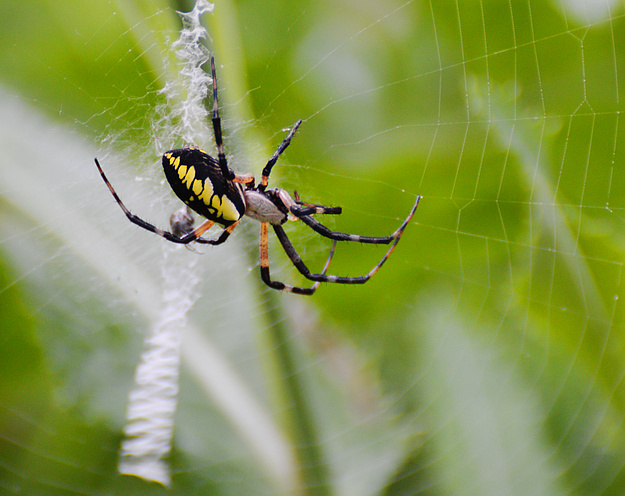
1680x1050 wallpaper
The dense, zigzag vertical structure is called a "stabilimentum", and is characteristic of the webs of these kinds of spiders. Scientists don't know for sure why they do it. (The original theory, now discarded, is that it helped stabilize the web somehow.) According to one of my Facebook commenters, it has been discovered that the stabilimentum reflects ultraviolet light. Some flowers use ultraviolet patterns to attract pollinating insects, so the purpose may be to attract prey in that fashion.
Cedar Grove Bugs
August 9th, 2015
After reading Gillian Mastromatteo's many accounts of Cedar Grove Nature Trail, I finally decided to go there and see what I could see. The trail is located near North Gower on Roger Stevens Drive, part of a large conservation area called Marlborough Forest.
The first thing to say is that this is the most deer fly infested place I've been, topping even Larose Forest. I'm learning not to get psyched out by deer flies in Ontario, since the variety we have here seldom seems to bite (seldom--not never, seldom. I do not recommend letting an Ontario deer fly be at leisure on your body.) As opposed to, say, the deer flies at Outer Banks, which very much bite and bite hard. But when there are fifty-some flies buzzing around you and getting tangled in your hair, it gets old fast even when they don't bite.
Gillian has told stories of walking through these woods attended by a swarm of deer flies, until a group of large dragonflies comes along and picks them off one by one. I thought it sounded like fun to be a dragonfly feeder, so I waited...and waited, but my knights in shining chitin failed to show. So I doused myself in about a gallon of bug spray. Which helped, though not nearly as much as you might think.
The good news is that the trail was also teeming with interesting, less obnoxious insects. It was in fact more rich with small insect life than anywhere I've been. Many of them were attracted to the black-eyed susans that were abundantly in bloom. Most were too small for my telephoto lens to properly capture (which drives my hunger for a macro lens), but here are a few I did manage.
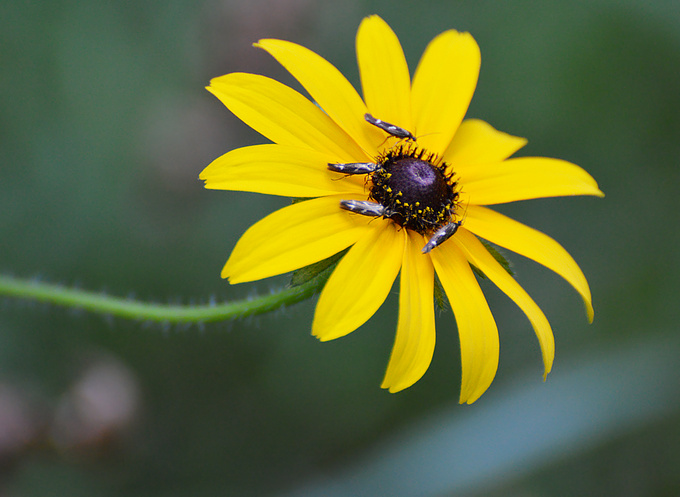
1680x1050 wallpaper
When I first arrived these little insects were so perfectly arranged, they looked like part of the flower. I was stumped by them and figured they were probably in one of the many categories of miscellaneous small bugs (treehoppers, leafhoppers, planthoppers, plant bugs...) that I was little familiar with. The folks on BugGuide were finally able to enlighten me: they are in the "flower moth" family, probably Landryia impositella. I would never have guessed that these tiny little guys were a type of moth! Clearly an understudied insect, since you can't even find a Wikipedia page until you get up to the Family level (Scythrididae), and even them it's little more than a stub.
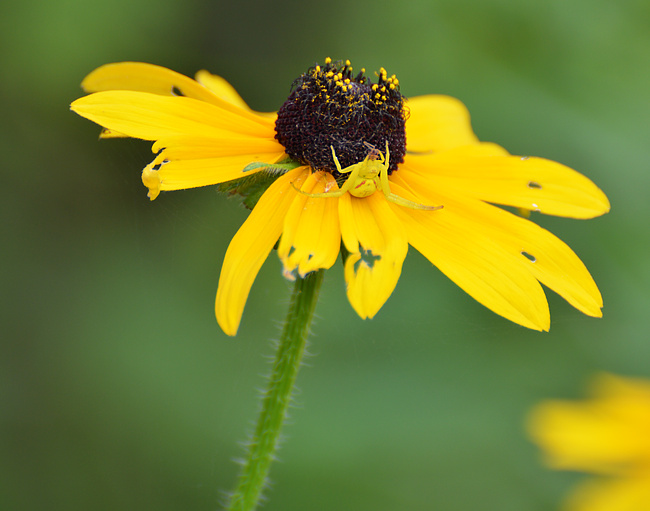
A Goldenrod Crab Spider. Crab spiders are ambush predators, lying in wait with their long front legs wide open ready to grab. They can slowly change color from white, to pale greenish-yellow, to bright yellow, or back, to camouflage against the flower they're on. (The camouflage is both a hunting aid and a defense against their own predators.) This one wasn't quite a match yet to the deep orangey-yellow of the black-eyed susan, which is probably why every small insect I saw land on the flower quickly took off again!

This one's color was so off it decided its best course of action was to hide.
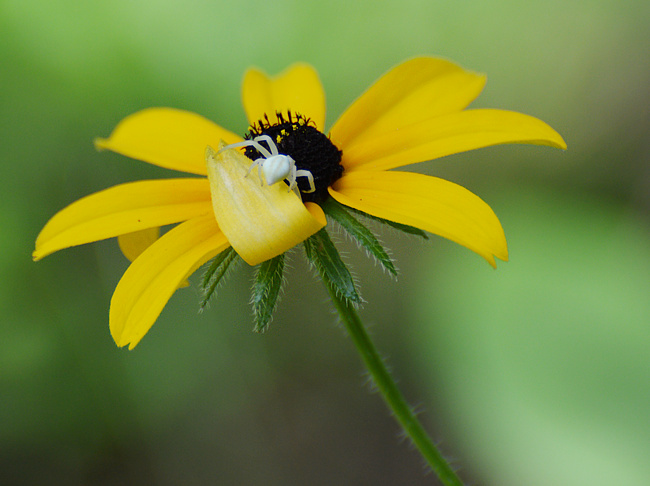
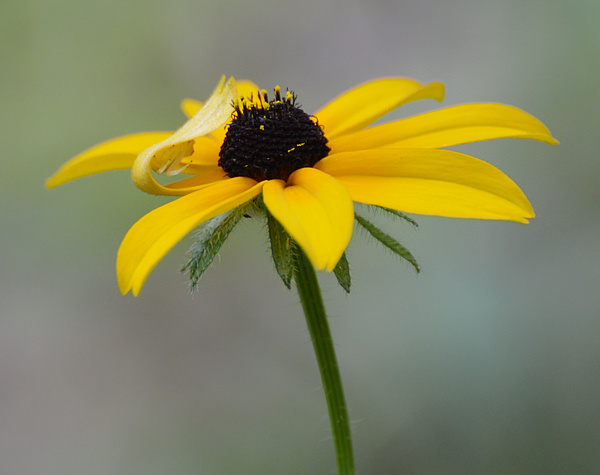
|
